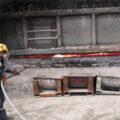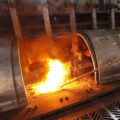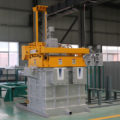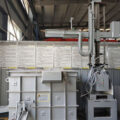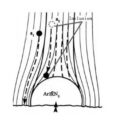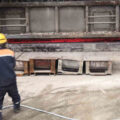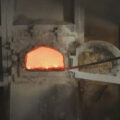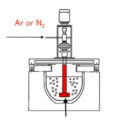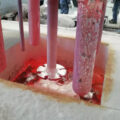The floatation method is currently the most widely used degassing method of molten aluminum. The principle is to pass an inert gas or an active gas insoluble in the molten aluminum into the molten aluminum, or add a chlorine salt (chloride) to react with the molten aluminum to generate a gas, which generates a large number of escaped bubbles in the molten aluminum.
Since the partial pressure of hydrogen in the bubble is PH=0, the hydrogen dissolved in the aluminum liquid will continue to enter the bubble according to the principle of hydrogen removal kinetics. After the bubbles rise to the surface, the hydrogen in the bubbles escapes into the atmosphere. Therefore, the continuous generation of bubbles can continuously remove the hydrogen dissolved in the aluminum liquid.
The hydrogen atoms dissolved in the molten aluminum migrate to the surface of the purification bubbles, are adsorbed on the surface of the bubbles, form hydrides into the hydrogen bubbles, and finally escape the kinetic process of the molten aluminum as the bubbles rise to complete the degassing and purification of the molten aluminum.
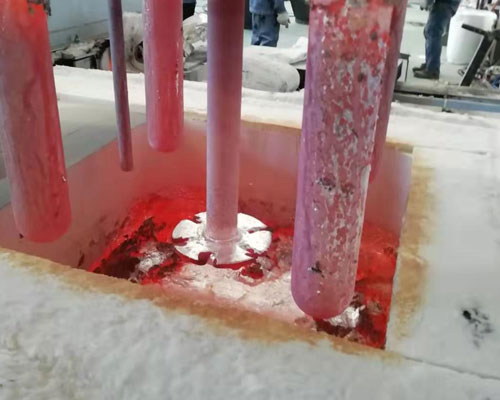
AdTech degassing equipment adopts the floatation degassing method of molten aluminum, does not pollute the aluminum liquid, and has a long service life. It has a non-wetting performance with aluminum, and the aluminum liquid flows through the non-stick aluminum, which is easy to clean. Good surface strength, resistance to liquid aluminum erosion, corrosion, no moisture absorption, no cracking, and no aeration to liquid aluminum. The degassing box adopts a sealed design to prevent secondary pollution caused by outside air entering.
The degassing equipment has good thermal shock resistance and resistance to rapid cold and rapid heat. The coefficient of thermal expansion is small, and it can be used continuously at working temperature to maintain a stable appearance without deformation. No deformation or cracking occurs at a continuous baking temperature of 1050°C.

